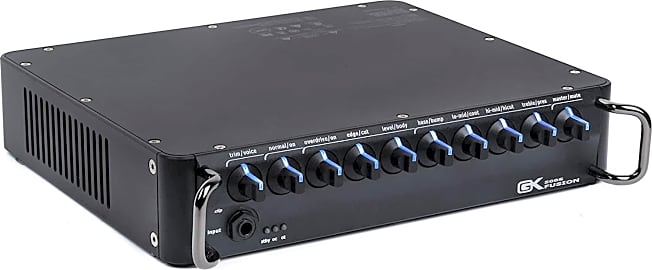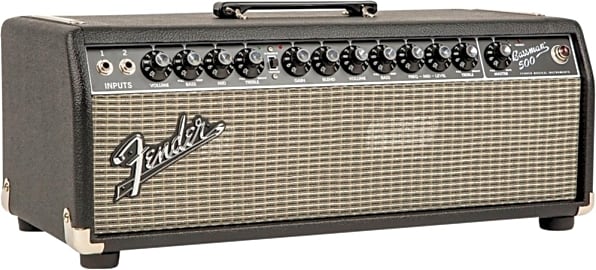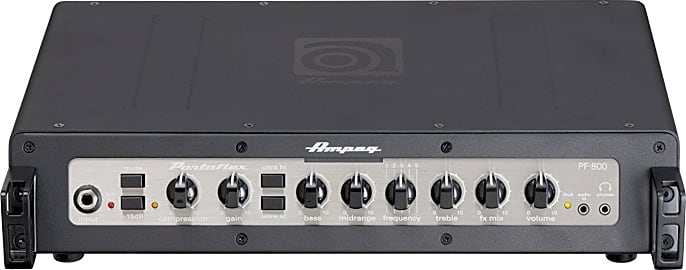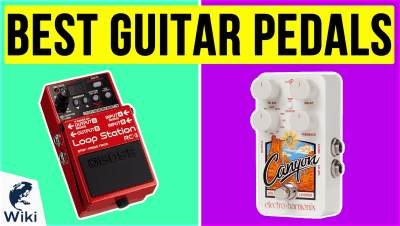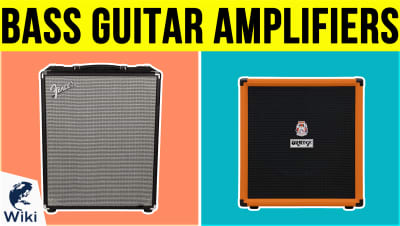The 10 Best Bass Amp Heads

This wiki has been updated 29 times since it was first published in February of 2018. If you're serious about taking your live performances to the next level, you have to invest in a high quality bass amp head. These options will deliver a decent amount of power to a dedicated cabinet, and many also feature direct XLR outputs that allow you to play through a venue's PA system. We've included models suitable for a range of budgets, ranked here by tone, wattage, and portability. When users buy our independently chosen editorial picks, we may earn commissions to help fund the Wiki.
Editor's Notes
August 13, 2020:
The Gallien-Krueger Ultra Light MB200 is the only model still in the company's MB line that's still in production, and the previously included Fusion model has also been discontinued, so we replaced it with the new Gallien-Krueger Fusion S 500, which offers a ton of cool features, including knobs with illuminated pointers for use in bad light, as well as an aux input, so new players can plug in their own tunes and play along to help hone their style.
The Ampeg SVTVR Classic Vintage Reissue remains a top dog in the market, as it's hard to compete with that kind of tube sound made to last by a respected company. Of course, the graphic equalizer on the Ampeg SVT-3 Pro draws a tremendous amount of musicians away from that reissue and toward what is ultimately a more flexible, if less iconic sound. That's thanks to the fusion of solid state and tube technology that allows for plenty of natural warmth, but also a crisp clean sound when needed.
In our special honors section, you'll find an offering that leans heavily into that tube sound, with simple controls and a durable construction, though some players might want to invest in additional effects to help these heads spread their wings, as their tube-forward sound may hem you in stylistically.
May 07, 2019:
Given the warmth and clarity of the tube-driven Ampeg SVTVR, it rather confidently marched to the top of our list. Our previous number one was also and Ampeg offering, but it relied on a combination of tube and solid state. Some users might prefer that touch of digital presence in their sound — and to be fair, once you get within the top half of this list things get pretty subjective — but that full-tube sound just has too much character to deny it. In our number two spot, availability issues with the Hartke 500-watt caused us to shift our selection to its rather capable 350-watt little brother. Unless you need to fill a concert hall without the aid of a PA system, 350 watts should still be plenty. Despite its conveniently small size, the third Ampeg model included in our selection fell to tenth due to some reliability problems, particularly with active basses.
Special Honors
Reeves Custom 225 A 225-watt model built to provide the kind of tube warmth you might only otherwise find in vintage offerings, this selection features both bright and presence control knobs that help you use that natural overdrive to your specific desires. It's not going to be the cleanest sound imaginable, and it is a bit pricey, but it's well built and features a balanced XLR output and switchable impedance. reevesamps.com
A Step Up From The Combo
Many of the heavier cabinets out there are built to tilt and roll as though they were on a hand truck, adding a bit to their mobility.
Bass players understand how important the role is that they play in a group of instrumentalists, whether they’re laying down a fat, slapping a line of funk or a smooth, fretless jazz fusion. Yet, if you’ve ever been to see a local band playing live at a small venue, you’ve probably heard mostly guitar, some hint of vocals, a few of the drums (usually just the snare and cymbals), and little to no bass.
The problem here comes from a few places, not just from ego-maniacal guitar players (though they do top the list). In addition to those jerks, you have venues that are not purpose-built to naturally convey sound; PA systems that are either cheaply made, run by people who don’t know how to use them, or both; and a pretty reliable disparity in the quality and power of amplification equipment from one band member to the next. If you’re lucky enough to play in a venue that mics the amps, you might get a better balance, but then you’re relying on any subwoofers within the PA system to carry your low end along. To guard against these scenarios, every bassist should make an effort to acquire a stack, which essentially consists of a speaker cabinet and an amplifier head unit.
Stacks are typically much more powerful than combo amps that marry the amplifier unit and the speakers into a single, portable cabinet. They also still have the ability to get quieter for when you are in a well built audio environment and in the hands of a capable engineer. Many even boast direct outputs that can send your bass’s signal straight to the PA system without the need for a microphone.
The only downsides to a stack are the cost and the portability. Good heads are often as expensive as entire combo amps, if not more so. And truly great bass cabinets are going to cost about the same. While there isn’t much you can do about the cost, many of these heads can be rack mounted or at least fitted into a reliable road case that will add handles and wheels to the picture. Many of the heavier cabinets out there are built to tilt and roll as though they were on a hand truck, adding a bit to their mobility.
What To Look For In A Bass Amp Head
Like any other musician, a bass player should strive to create a sound uniquely their own. Picking the right amp head will go a long way toward achieving this, surpassed in importance only by the bass guitar itself. That means it might be a smart idea to hear what these heads sound like in person, ideally with your preferred bass plugged in. Then, you can come back and make your purchase online to deprive the impoverished Guitar Center employee of their commission.
That does mean you get a little less nuance in your control, but it might be enough to find your sound.
Regardless of whether you can make it out to your local music shop, you can look for certain features offered by the best heads out there to determine which will be the most flexible. The odds are good that you aren’t going to be able to turn on, plug in, and get a perfect tone for your specific playing style with all the settings untouched. So, an amp that offers more settings is usually a smart purchase.
Among available settings, few are more useful than a graphic equalizer. This is usually a small set of thin faders assigned to adjust certain frequencies. More faders means more control over the shape of your tone. If the head you like best lacks a graphic EQ, many still feature simple, knob-based equalization controls labelled Bass, Mid, and High (or Treble), which correspond larger ranges of frequencies than an individual fader on a graphic system would. That does mean you get a little less nuance in your control, but it might be enough to find your sound.
Other great features to look out for include direct XLR outputs, which, as we said above allow you to hook your head up directly to a larger PA. If all you can afford at the outset is the amp head, but you know your regular venues have decent sound systems, you can safely invest in a head with a direct out and play through the PA until you can save up for a cabinet.
You’ve also probably encountered a lot of hype around tube preamps and their superiority over solid state systems. I’m proudly in the tube-driven camp, even though they tend to have more problems that are more expensive to fix when they occur. Total control freaks might actually dislike the somewhat unpredictable quality of a tube head’s natural warmth, as well. If you’re like me, though, and you want a little surprise in your sound — something that gives your tone a more living, organic feel — there’s nothing like a set of tubes.
Vital Accessories For Any Bassist
Even if you absolutely love the feel of your bass guitar, and the sound it creates in concert with your chosen amplifier, there are still some excellent accessories that can improve your experience and give you even more options in defining your style. Some of these are pretty small investments, while others might require a little more pocket change.
Pedals like the Big Muff and the Electro-Harmonix Bass Microsynthesizer are among the most sought after effects boxes on the market.
Among the simple things you can do to improve your tone and your playing experience is to find the best possible set of strings. While typically more expensive than guitar strings, bass strings are still relatively cheap, so you should grab a few different sets from various brands, and find out what your favorite players use to help give you an idea of how you can expect them to perform.
On the more expensive end of the spectrum, you’ll find an endless assortment of effects pedals. There are some pedals designed for guitars that bassists swear by, but models built with a low end register in mind will usually have much more reliability and flexibility. Pedals like the Big Muff and the Electro-Harmonix Bass Microsynthesizer are among the most sought after effects boxes on the market. But don’t just grab what everyone else is using. Plug in, play around, and take your time in creating a tone that is yours and yours alone.




